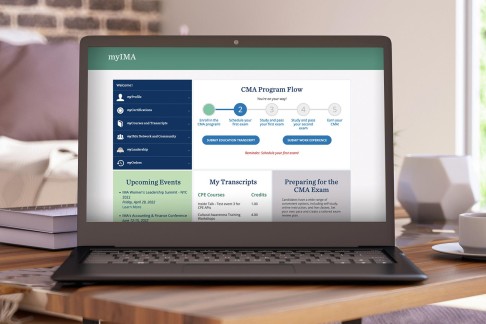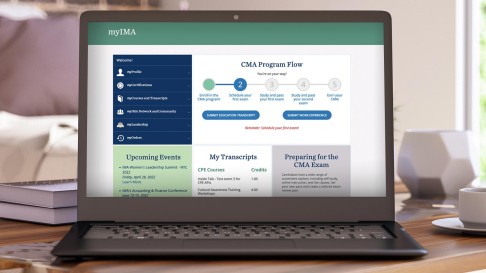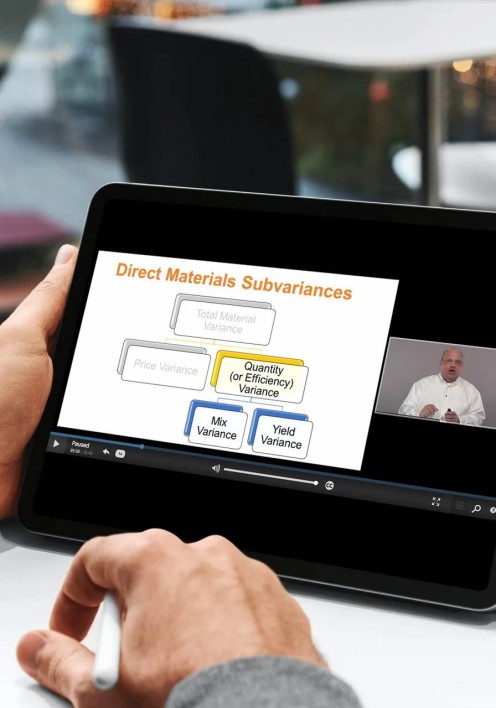CIA part 2 exam preparation course.
CIA is the only globally recognized internal audit certification!
Start July 2024
The CIA exam consists of three parts: Part 1 "Essentials of Internal Auditing", Part 2 "Practice of Internal Auditing" and Part 3 "Business Knowledge for Internal Auditing". The CIA qualification is awarded to candidates who successfully pass all 3 challenging exams.
CIA Part 2 includes four sections focused on managing the internal audit activity, planning the engagement, performing the engagement, communicating the results of the engagement, and monitoring. Part 2 tests candidates' knowledge, skills and abilities related to performance standards (2000, 2200, 2300, 2400, 2500, and 2600 series) and current internal audit practices.
Training program provides the following knowledge and practical skills:

The CIA part 2 course syllabus includes the following sections: managing the internal audit activity - 20%, planning the engagement - 20%, performing the engagement - 40%, communicating engagement results and monitoring progress - 20%.
Lesson 1. Managing internal audit. Planning
Policies and routines for planning, organizing, directing and monitoring internal audit activities. Various administrative activities (budgeting, resourcing, staffing, etc.) of internal audit.
Lesson 2. Developing a Risk-Oriented Internal Audit Plan
Selecting sources of potential internal audit engagements. Risk management framework for assessing risks and prioritizing audit engagements based on risk assessment results. Types of assurance engagements. Types of consulting engagements. Coordination of internal audit with external audit, regulatory oversight bodies and other control functions, and the ability to leverage the work of other assurance providers.
Lesson 3: Communicating results and reporting to senior executive management and the board
Informing management of the audit plan, seeking approval. Significant areas of risk, control and governance on which the head of internal audit should report to the board. Features of the overall effectiveness of internal control and risk management - report to management. Key performance indicators on which the head of internal audit reports periodically to senior executive management and the board of directors.
Lesson 4. Planning the assignment
Defining the purpose of the assignment evaluation criteria and scope of the assignment. Planning the engagement to ensure key risks and controls are identified. Detailed risk assessment for each audit area, including evaluation and prioritization of risk factors and controls. Assignment procedures and prepare a work program. Level of staff and resources required for assignments.
Lesson 5. Performing the assignments
Data collection: risk and control checklists and questionnaires as part of a preliminary survey of audited activities. Sampling and statistical analysis techniques. Analysis and evaluation. Significance, sufficiency and reliability of potential sources of evidence. Analytical approaches and methods of process comparison, analytical review. Working papers and documentation of relevant information to support the findings and results of the engagement, conclusions about the results of the engagement, including assessment of risks and controls.
Lesson 6: Oversight performed on the assignment
Informing about Assignment Results and Risk Acceptance. Preliminary communication with clients on the results of the assignment. Preparation of interim reports on the progress of the assignment. Development of recommendations to improve the organization's performance, increase and maintain its value. Process for communicating the results of the audit engagement and reporting, including the responsibility of the head of internal audit for assessing residual risk. Process for communicating risk acceptance. Performance Monitoring: Evaluating the results of the engagement, including management's action plan, Managing the monitoring and tracking the status of the results of the audit engagement communicated to management and the Board of Directors.
Lesson 7: Part 2 Final Lesson.
Repetition of all topics covered in previous lessons. Practical issues. Test-taking strategies and time management. Preparation for the CIA Part 2 exam.
Ms Qurashvili, PhD, has 17 years of experience delivering various courses at universities and institutes, working in senior positions for pharmaceutical companies, and preparing and submitting financial statements. While working in the public sector, she served as an advisor in the affairs of the Social Security of Youth and Young Families, Department of Youth Affairs of Georgia. As a project manager, Ms Qurashvili has collaborated with organizations such as Save the Children (USA), the Swiss Agency for Development and Cooperation in the South Caucasus (Switzerland), and the Bureau of Population, Refugee, and Migration (USA). Ms Qurashvili is the founder and director of Pharmacy Ltd as well as Lotus Ltd, a micro-manufacturing company. Currently, she also holds the position of an associate professor at ALTE and Ken Walker International Universities and is an invited professor at the University of Georgia. Additionally, she is an author of several scientific publications.

Lessons are conducted ONLINE in real time on the ZOOM platform. Trainees can communicate with the tutor and colleagues and ask clarifying questions during the training. A virtual whiteboard is used to demonstrate calculations, graphs and diagrams during each lesson. A presentation with the main ideas of each topic is shown. Study materials, practical tasks and tests, CIA books are provided. After the lesson all participants receive a video recording of the lesson and an informative and comprehensive notes from the tutor. The training process includes testing on each topic to consolidate the material covered and to practice solving exam tasks. Each student is given access to a personal account of the learning system with the ability to monitor progress.
CIA training in Georgia. Courses, test, exam, qualification, certificate | HOCK

Candidates for CIA certification must complete 3 examination parts. Part 1 of the exam contains 125 multiple-choice questions, Parts 2 and 3 - 100 multiple-choice questions. The time for Part 1 is 2.5 hours, for Parts 2 and 3 is 2 hours. A candidate must answer approximately 75% of the questions correct in order to pass the exam.

To be approved into the CIA program, the candidate must either: hold a Bachelor’s degree or higher, or hold an active Internal Audit Practitioner designation, or possess five years of internal audit experience, or be an active student in your final year of college. To qualify you must provide a written recommendation from their supervisor / employer or Certified Internal Auditor. Candidates must have two years of experience in the field of internal audit or quality Assurance, risk management, audit/assessment/disciplines, compliance, external audit, internal control. Candidates may apply to the certification program and sit for exams prior to obtaining the required work experience. However, candidates will not be certified until unless the experience requirement is met within the program eligibility period.


What is included in the course fee?